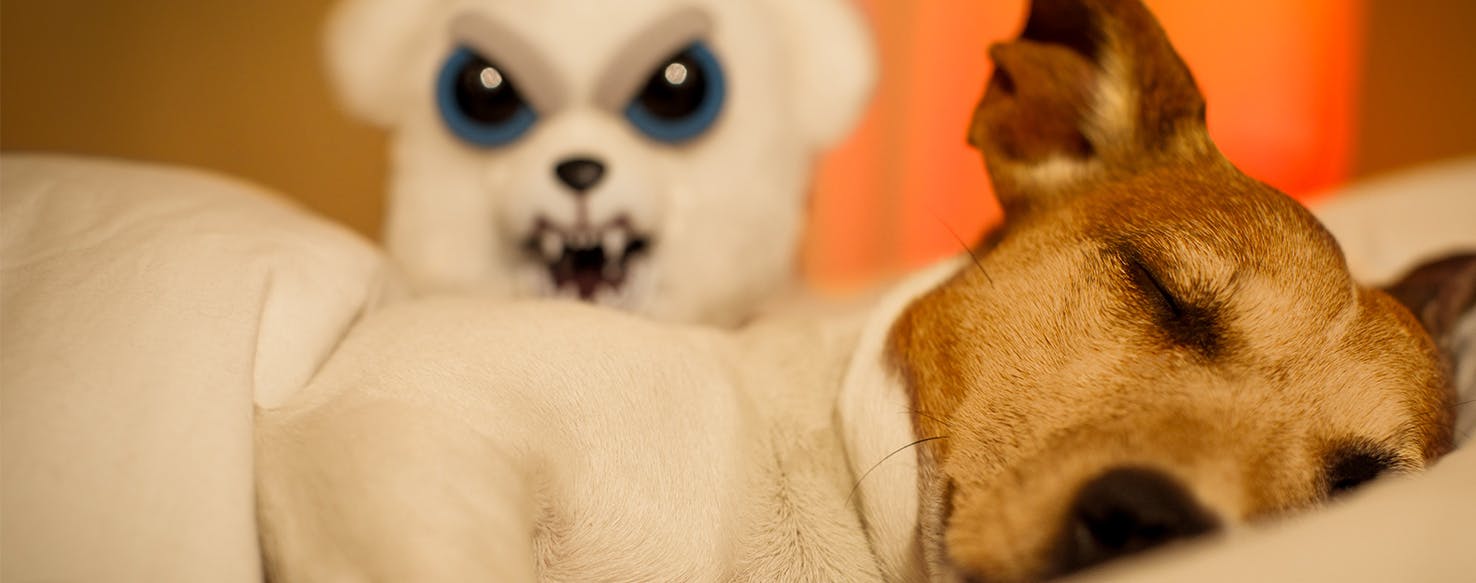- Home
- The Daily Wag!
- Behavior
- Why Dogs Have Nightmares
Why Dogs Have Nightmares

Common
Normal
Introduction
What do dogs dream about? Chasing squirrels, catching cars, and the poodle at the neighbors for sure. In movies and shows, dog dreams are often portrayed as delightful places full of wonder and bacon. One of the only cultural references regarding dog nightmares comes in the form of the over-the-top animated comedy "Family Guy". Brian, the talking four-legged family member, becomes plagued with nightmares and must go through great lengths to relieve the night terrors... but how real is this perspective? Though not a lot of research has been done regarding the dreams of man’s best friend, it is pretty common for dogs to have dreams. For the unlucky few, nightmares can replace this time of solace. You can recognize these instances in your dog, and make efforts to reduce and hopefully eliminate these night terrors.
The Root of the Behavior
Looking at the behaviors from a psychological perspective, rats have a lot of information they can glean on the topic. When dreaming, a rat will act out memories, exactly as they perceived it in real life. This would indicate they are not fabricating their dream world, as humans sometimes do, but reliving those moments in their mind. It is unclear whether or not all dogs have dreams, but the signals are clear when they are occurring. Typically, they present themselves as a slight twitch, a growl, or snapping at the imaginary. These are most easily observed during the first 10-20 minutes of sleep.
Like humans, however, the dreams gravitate toward activities the dog is commonly involved in or around a particular life experience. The latter is where our problem may reside. Nightmares are much more common in dogs whom have experienced trauma, or an abusive experience in the past. If these behaviors are more aggressive, a loud barking, shaking, etc. it may be a sign your dog is not dreaming, but having a nightmare.
Unfortunately, there is little you can do to help your four-legged friend other than to simply wake them, however there are some things you can do to prevent these in the first place. The most important step is to create a quiet and comfortable environment for your dog. Nightmares can be triggered by sounds and chronic pain, so a comfortable bed and a sound controlled environment can make a big difference. Swaddling your dog in a blanket can give them a feeling of security that can also relieve anxiety which could be causing some of the issues.
Often nightmares are signs of underlying anxiety issues, joint pain, or past trauma. In cases like these, although preventative measures can provide some relief, discussing it with your vet is certainly your best bet. Learning how to interact with your dog in ways that can make them feel more secure can also make a big difference. There are many courses available for you and your friend to take which will help, as much of this is triggered by your dog’s state of mind and comfort with their environment.
Need advice about your pet's health?
Get answers fast from a veterinary professional 24/7 in the Wag! App.
Get Vet ChatEncouraging the Behavior
Stimulus from the dog’s immediate environment can trigger negative dream experiences. If the dog is sick, it could cause aches and pains that, while sleeping, manifest themselves as a nightmare. Loud, high tempo music can cause similar effects. Give your dog its own space to sleep. A place removed from as much of the hustle and bustle of your household as possible. By reducing the stimulation from the environment, you may end up reducing the nightmares as well! Outside of your dog’s health, a scared dog can lash out in its sleep induced delirium and injure another pet or person. Take these steps, and if you can, consult a professional trainer to really make a difference.
There are some important things to look out for that may indicate larger problems. If your dog has a bowel movement or urinates itself, has its eyes open, is rigid and tense, or cannot be or has difficulty being woken, your dog may be experiencing seizures as opposed to nightmares. These symptoms, for the sake of your dog’s health, should be taken seriously and you should consult your veterinarian. Seizures and nightmares in canines are often mixed up, however, those symptoms in particular tend to indicate the former.
Other Solutions and Considerations
If it is just night terrors then it's unlikely they will cause any real harm to your dog. Even in the perfect environment, with no trauma or anxiety, your dog may still have occasional nightmares. If there was a perfect cure, we would all be using it for ourselves as well! Your best course of action is to maintain a healthy relationship with your dog. Plenty of affection and care, and a safe environment for them to shut their eyes. Occasional night terrors should not be of a great concern, though be sure to take it seriously if it becomes frequent.
Conclusion
Perhaps you could start a log of his nightmares. On days he has them, take note as to what you did that day. If you see trends, perhaps a certain dog you run into at the park, then mark them down. There is no exact science as to what is triggering nightmares, but a detailed scientific approach is always best to find out specifically what is causing them for your dog!
Written by a Shiba Inu lover Patty Oelze
Veterinary reviewed by:
Published: 02/07/2018, edited: 01/30/2020
More articles by Patty Oelze
